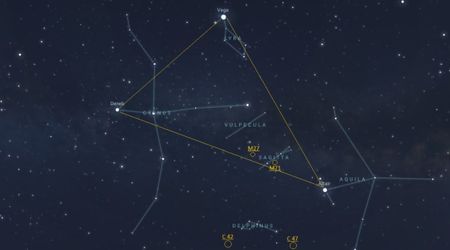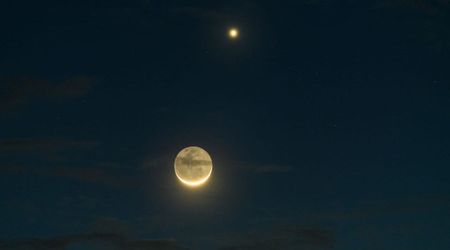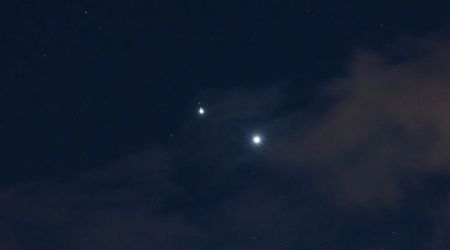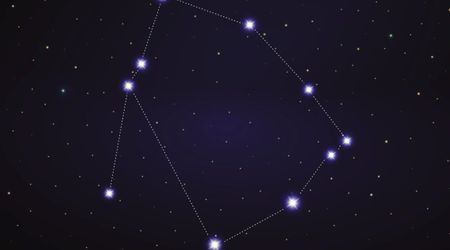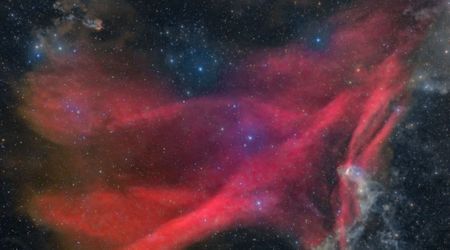Constellation Aquila

Aquila is a constellation located in the equatorial region of the sky and represents an eagle. It is best visible in the month of August, high in the evening sky.
Abbreviation: Aql Genitive: Aquilae English name: The eagle
Notable Stars in Aquila
Alpha Aquilae (Altair) – The brightest star of the constellation, shining at magnitude 0.8. Altair has a very rapid rotation, completing one turn every 6.5 hours. As a result of this rapid spinning its equatorial diameter is 14 percent greater than its polar diameter. Altair, along with Deneb (Alpha Cygni) and Vega (Alpha Lyrae), form the well-known Summer Triangle.
Beta Aquilae (Alschain) – This star shines at magnitude 3.7 and it is approximately 44 light years from Earth. It has a 12th-magnitude companion, 12.8 arcseconds distant.
Gamma Aquilae (Tarazed) – A giant star located near the Great Rift of the summer-time Milky Way. It has an apparent magnitude of 2.7 and its computed distance is 460 light years from Earth.
Zeta Aquilae – A difficult double star located approximately 83 light years from Earth. The primary component is a white dwarf shining at 3rd magnitude. The 12th-magnitude companion is found 6.5 arcseconds from the primary.
Eta Aquilae – One of the brightest Cepheid variables, ranging from magnitude 4.1 to magnitude 5.3 every 7.2 days. It is a supergiant star about 3000 times more luminous than the Sun, located 1200 light years from Earth.
Pi Aquilae – A double star easily resolved with a 6-inch telescope into its two components of magnitudes 6 and 7, separated by 1.4 arcseconds.
15 Aquilae – A yellow 5th-magnitude star with a 7th-magnitude companion 40 arcseconds away. It can easily be observed with small telescopes.
57 Aquilae – Another easy pair for binoculars or small telescopes. Its two components shine at 6th magnitude and are separated by 36 arcseconds.
R Aquilae – A variable star of the Mira class, visible with the naked eye at maximum brightness. Its magnitude ranges from 5.5 to 12 every 284 days.
Notable Deep Sky Objects in Aquila
B143-4 – A dark nebula located about 1.5 degrees to the west of Gamma Aquilae. Through amateur telescopes it appears as a dark, starless area that stands out from the starry background. The nebula is over a degree in size, so when observing use a wide-field eyepiece and low magnification to fit it in the field of view.
NGC 6709 – An open star cluster located five degrees southwest of Zeta Aquilae. Small telescopes show 30 stars spread in a diameter of 15 arcminutes.
NGC 6755 – A small cluster found 4.5 degrees west of Delta Aquilae, appearing as an elongated misty patch of light at low magnification. If you use 150x or more the cluster is resolved into about a dozen stars with magnitudes between 12 and 13.
NGC 6803 – A difficult 11th- magnitude planetary nebula, appearing as a stellar point even at high magnification.
Meteor Showers
Two meteor showers radiate from Aquila, but none of these can be observed visually.
The June Aquilids have only been studied by radar and it seems that the shower is active between June 2nd and July 2nd. The Epsilon Aquilids shower is active in mid-May, but it can be observed only with optical aid.
Discover More Constellations ?
This page is part of our collection of constellation articles. If you enjoyed the read, then you'll love the following articles.

Meet Apus, The Bird of Paradise Constellation

Meet Aquarius, The Water Bearer Constellation

Meet Antlia, The Air Pump Constellation

